25+ SAMPLE Construction Project Report
-
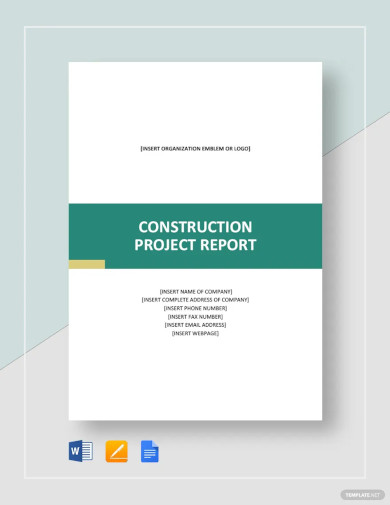
Construction Project Report
download now -

Construction Project Progress Report
download now -

Construction Project Management Report
download now -

Construction Project Buyout Report
download now -
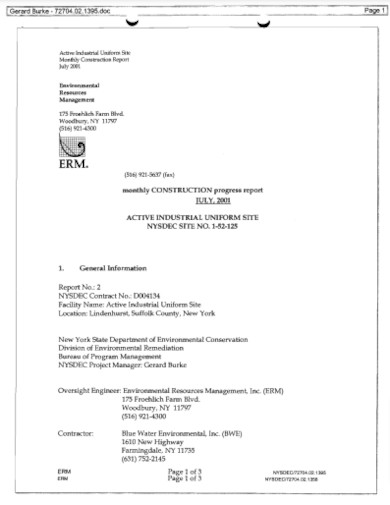
Monthly Construction Project Manager Report
download now -

Monthly Construction Project Progress Report
download now -

Monthly Construction Project Report
download now -

Weekly Construction Project Report
download now -

Daily Project Construction Report
download now -
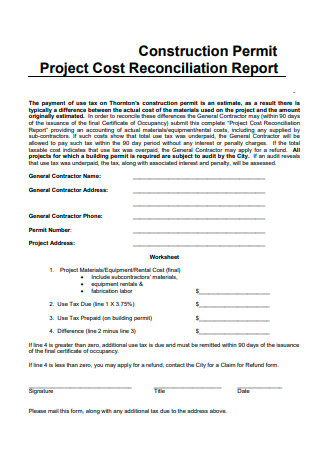
Construction Project Cost Reconciliation Report
download now -

Construction Project Feasibility Report
download now -

Water Project Construction Completion Report
download now -
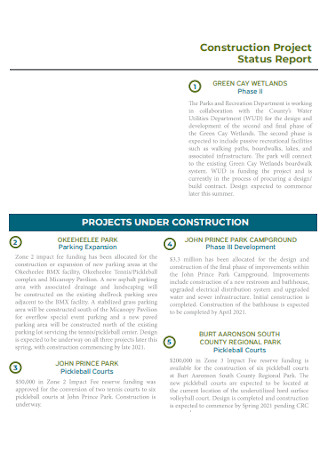
Construction Project Status Report
download now -

Construction Project Pilot Report
download now -

Construction Project Report Guide
download now -

Simple Construction Project Report
download now -
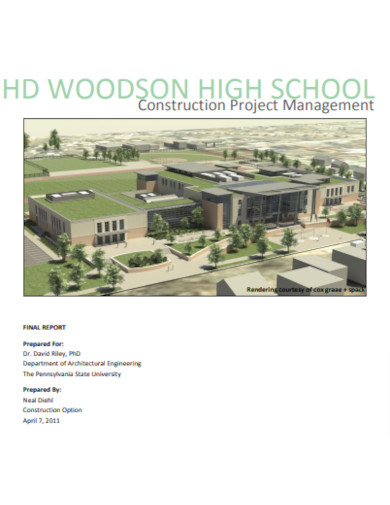
Construction Management Project Report
download now -

Construction Project Completion Report
download now -

Final Construction Project Report
download now -

Printable Construction Project Report
download now -

Road Construction Project Report
download now -
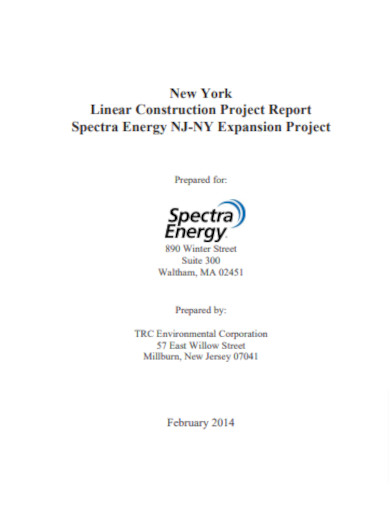
Linear Construction Project Report
download now -

Construction Project Design Report
download now -

Sample Construction Project Report
download now -

Construction District Project Report
download now -

Construction Project Plan Report
download now
FREE Construction Project Report s to Download
25+ SAMPLE Construction Project Report
Definition:
Construction Project Report: A Comprehensive Insight
Understanding the Importance of the Report:
Key Components of a Construction Project Report:
Benefits of Regular Reporting:
Crafting an Effective Construction Project Report:
How are labor and workforce details typically presented in the construction project report?
What role does the construction project report play in milestone validations and payments?
Why is it essential to include safety and compliance metrics in the report?
What sections of the report are particularly crucial for financial stakeholders or investors?
When should a construction project report be submitted to stakeholders?
Definition:
A Construction Project Report is a comprehensive document detailing the progress, challenges, and updates of a construction project. It offers stakeholders insights into various aspects like budgetary concerns, timelines, and any potential issues, ensuring transparency and accountability throughout the project’s duration. This tool is essential for informed decision-making and efficient project management in the construction domain.
Construction Project Report: A Comprehensive Insight
In the dynamic world of construction, effective communication and transparency reign supreme. A Construction Project Report acts as a bridge, conveying pertinent information about a project’s status to all involved parties. From cost overruns to timeline shifts, this document keeps stakeholders informed, ensuring the project stays on track.
Understanding the Importance of the Report:
The report serves as a crucial tool in any business or project. It provides a comprehensive overview, capturing key details, progress, challenges, and findings. Reports create a tangible record, facilitating informed decision-making, ensuring accountability, and tracking performance over time. By offering insights and transparency, reports build trust among stakeholders and foster a culture of continuous improvement and communication.
The Pivotal Role of Reports:
In any industry analysis, reports play an indispensable role in encapsulating data, information, and analyses in an organized and comprehensible manner. They serve as the foundational tool for decision-making, monitoring, and strategic planning.
Offering Tangibility to Data:
While data on its own can be overwhelming, reports bring structure to this vast array of information, presenting it in a manner that’s both insightful and actionable. They offer a tangible representation of data, transforming numbers and statistics into visual elements such as charts, graphs, and tables.
Driving Informed Decisions:
One of the main advantages of reports is their ability to drive informed decisions. By consolidating data into a coherent format, stakeholders can glean insights, identify trends, and make educated choices based on the information presented.
Enhancing Accountability and Transparency:
Reports not only facilitate decision-making but also foster a culture of accountability and transparency. They serve as records, providing a historical account of activities, outcomes, and decisions, thereby holding entities accountable for their actions.
Providing a Benchmark for Performance:
Through reports, companies can establish benchmarks for performance, comparing current outcomes with past results or industry standards. This comparison aids in identifying areas of improvement, setting future targets, and charting a course for achieving those goals.
Acting as a Communication Tool:
Lastly, reports act as effective communication tools, bridging the gap between different departments, stakeholders, or external parties. They ensure that everyone is on the same page, reinforcing alignment and collaboration across the board.
Key Components of a Construction Project Report:
Delving into the report, various sections come together to give a comprehensive overview:
Project Overview:
This section provides a general summary of the project, including its name, location, purpose, and the main stakeholders involved. It establishes a context for anyone who’s unfamiliar with the project.
Timeline and Milestones:
Here, the start date, end date, and critical milestones of the project are laid out. It may include a Gantt chart or other visual aids to represent the progression and phase breakdowns.
Budget Analysis:
This crucial section details the initial budget, current expenditures, projected costs, and any variances. It helps stakeholders understand the financial health of the project.
Progress Status:
Detailing where the project currently stands in terms of completion, this component might include percentages, task lists, or visual representations of progress versus the planned trajectory.
Resource Allocation:
A breakdown of how resources, both human and material, are distributed. It might detail teams, roles, equipment used, and any resource constraints faced.
Risk and Issue Log:
This section lists any potential risks identified and issues encountered during the project. It would also typically include mitigation strategies or corrective actions taken.
Change Requests:
Any modifications to the initial plan, whether they’re scope, budget, or timeline changes, are detailed here, along with reasons for the changes and their approvals.
Quality Control and Assurance:
Insights into the quality metrics used, checks performed, and any non-compliance or variations detected. This section ensures that the project adheres to the set standards and benchmarks.
Future Projections:
Based on the current status and pace, this component forecasts the future course of the project, predicting potential delays, costs, and other critical factors.
Recommendations and Conclusions:
The report may conclude with any recommendations for improving the project’s trajectory or addressing persistent issues, followed by a summary encapsulating the entire report’s essence.
Benefits of Regular Reporting:
While it might seem tedious, regular reporting has numerous benefits:
Enhanced Decision-Making:
Regular reporting provides current data, allowing stakeholders to make informed decisions. It ensures that choices are grounded in the latest project realities rather than assumptions or outdated information.
Improved Accountability:
With frequent reporting, teams and individuals are more accountable for their roles and tasks. It’s easier to pinpoint where things may be going off track and who might be responsible.
Risk Mitigation:
Regular insights into project progress enable early identification of potential risks or issues. Early detection allows for timely intervention, reducing the likelihood of significant disruptions or costly corrections later on.
Transparent Communication:
Consistent reporting fosters open communication among stakeholders, ensuring everyone is on the same page. This transparency can prevent misunderstandings and conflicts, leading to smoother project execution.
Stakeholder Engagement and Trust:
When stakeholders receive regular updates, they feel more engaged and involved in the project. This consistent engagement fosters trust, as stakeholders can see that the project is being managed actively and transparently.
Budgetary Control:
Continuous financial reporting ensures that any budgetary discrepancies are immediately highlighted. This frequent financial oversight can prevent costly overruns and ensure funds are allocated efficiently.
Performance Evaluation:
Regular reporting allows for a consistent evaluation of team performance. Understanding how different facets of the project are progressing can lead to better resource allocation and productivity enhancements.
Goal Alignment:
By consistently assessing project status report against objectives, teams can ensure they remain aligned with the project’s overarching goals. Regular checkpoints prevent drift and ensure the project stays on its intended course.
Historical Record:
Frequent reports create a detailed historical record of the project. This documentation can be invaluable for post-project reviews, training, and as a reference for future projects.
Boosted Morale:
Seeing regular progress, even if incremental, can boost team morale. Recognizing achievements and milestones through reporting can motivate teams and foster a sense of accomplishment.
Crafting an Effective Construction Project Report:
For a report to be effective, it must be clear, concise, and comprehensive:
Clearly Defined Objectives:
Start by clearly stating the primary objectives of the construction project. This sets the context for the entire report, helping readers quickly understand the project’s goals and the desired outcomes.
Executive Summary:
This section provides a brief overview of the project’s status. It should highlight key achievements, challenges faced, and any significant changes since the last report. The executive summary serves as a quick snapshot for stakeholders who may not have time to delve into every detail.
Detailed Project Status:
Break down the project’s progress into different sections or phases. This could include site preparation, foundation work, structural work, finishing, etc. For each section, provide specific details on completion percentages, milestones achieved, and any deviations from the plan.
Financial Overview:
Present a clear picture of the project’s financial health. This includes initial budgets, current expenditures, projected costs, and any variations. It’s crucial to highlight any areas where the budget might be overspending and provide reasons for these discrepancies.
Risk Assessment:
Identify and detail any potential risks or challenges the project may face in the upcoming phases. This section should also include mitigation strategies or contingency plans in place to address these risks.
Timeline and Schedule:
Provide an updated project timeline, highlighting any changes since the last report. Clearly show completed phases, ongoing activities, and upcoming tasks along with their expected completion dates.
Resource Allocation:
Detail the manpower and equipment allocation across various tasks. Mention any resource constraints and the strategies adopted to address them.
Quality Control and Compliance:
Discuss the measures in place to ensure the quality of construction and adherence to industry standards and regulations. Highlight any inspections, tests, or audits conducted and their outcomes.
Stakeholder and Communication Updates:
List any meetings, discussions, or communications with key stakeholders. This ensures transparency and shows that stakeholder inputs and concerns are being addressed.
Visual Aids:
Incorporate charts, graphs, and photographs wherever relevant. Visual aids can make the report more engaging and help convey complex data in an easily digestible format.
Recommendations and Future Outlook:
Conclude with recommendations based on the report’s findings. Outline the next steps, any corrective actions needed, and provide a general outlook on the project’s future trajectory.
Appendices:
For stakeholders who wish to dive deeper, include appendices with detailed data, additional charts, or supplementary information. This ensures the main report remains concise while still providing comprehensive data for those who seek it.
How are labor and workforce details typically presented in the construction project report?
In a construction project report, labor and workforce details are typically presented as a breakdown of manpower allocation across various tasks, showcasing total hours worked, specific roles involved, skill sets required, overtime details, and attendance records. Charts or graphs may visualize labor distribution, while highlighting any shortages or overstaffing issues.
What role does the construction project report play in milestone validations and payments?
The construction project report plays a pivotal role in milestone validations and payments by providing documented evidence of completed tasks, progress percentages, and associated costs. It ensures that the project adheres to the predetermined schedule and budget, facilitating timely and accurate disbursements based on actual achievements and verified milestones.
Why is it essential to include safety and compliance metrics in the report?
Including safety and compliance metrics in the report is essential to demonstrate adherence to regulations, ensure worker well-being, and mitigate risks. It reflects a project’s commitment to industry standards, helps identify areas for improvement, and reassures stakeholders that the construction process prioritizes safety and legal compliances above all.
What sections of the report are particularly crucial for financial stakeholders or investors?
For financial stakeholders or investors, the sections detailing budget allocations, expenditure breakdown, financial projections, return on investment estimates, and payment schedules are particularly crucial. These provide insights into the project’s financial health, profitability, and adherence to budgetary constraints, ensuring transparency and informed decision-making.
When should a construction project report be submitted to stakeholders?
A construction project report should be submitted to stakeholders at predetermined intervals, often monthly or quarterly, depending on the project’s scale and complexity. Additionally, reports should be presented upon reaching significant milestones, after major incidents, or when substantial changes to the project’s scope, budget, or timeline occur, ensuring timely and informed decisions.
In conclusion, a construction project report is paramount for ensuring project transparency, accountability, and efficiency. As the construction sector thrives, leveraging these detailed reports is crucial for stakeholders and project managers. By meticulously chronicling every project phase, these reports have become the gold standard for monitoring progress and fostering informed decision-making in the dynamic construction landscape.
